The Ultimate E-Readers: Enhancing Your Digital Reading Experience
The digital reading revolution has transformed the way we consume literature, making books more accessible than ever. E-readers have emerged as the technology of choice for avid readers seeking convenience and portability. With a plethora of devices available, it can be challenging to navigate the options. This article delves into the evolution of e-readers, their essential features, popular models, useful accessories, optimal settings, and emerging trends to enhance your overall reading experience.
The Evolution of E-Readers: A Brief Historical Overview
The journey of e-readers began in the late 1990s, when the first dedicated device, the Rocket eBook, was introduced, sparking interest in digital reading. Though its early iteration offered limited capabilities, the concept quickly developed. Soon after, in 1998, the Franklin eBookman entered the market, paving the way for a new era of digital literature. These early e-readers were primarily designed for reading e-books purchased from specific vendors, making them somewhat restrictive in terms of content.
The technological advancements in the 2000s led to the introduction of several pivotal devices. Amazon launched the Kindle in 2007, revolutionizing the market with its Wi-Fi capabilities and a vast online bookstore. The Kindle popularized the idea of owning a library in one’s pocket, allowing users to purchase and download books instantly. This marked a significant shift from traditional publishing, enabling self-publishing and greater accessibility for independent authors.
Fast forward to today and e-readers have evolved to be incredibly sophisticated, offering high-resolution displays, adjustable lighting, and various enhanced features that cater to readers’ preferences. Companies like Kobo and Barnes & Noble’s Nook have emerged alongside Amazon, bringing competition and innovation to the field, with devices designed to improve readability and provide a more immersive experience. The growing popularity of e-readers is a testament to their ability to adapt and integrate advancements in technology into the reading experience.
Key Features to Look for in an E-Reader Today
When selecting the ideal e-reader, it’s crucial to consider the key features that align with your reading habits. One of the most important aspects is screen type and resolution. E-ink technology, which simulates paper, is preferred by many readers for its reduced eye strain compared to traditional screens. A high-resolution display with crisp text can significantly enhance reading comfort, especially for long sessions. Additionally, features like adjustable front lighting and anti-glare screens will ensure readability in various lighting conditions, from bright sunlight to dimly lit rooms.
Another essential feature to consider is battery life. Most e-readers hold a multi-week battery charge, allowing you to read without often worrying about recharging. This is particularly advantageous for travelers or those who enjoy reading on the go. Furthermore, storage capacity is worth looking into; many devices allow for thousands of e-books, making it easy to carry an entire library with you. Support for various file formats, including EPUB and PDF, can also broaden your reading options, providing flexibility in content choice.
Moreover, connectivity options such as Wi-Fi or cellular capabilities expand your ability to purchase and download books directly to your device. Additional features like integrated dictionaries, highlight and note-taking capabilities, and cloud syncing for seamless access across devices can greatly enrich your reading experience. By keeping these considerations in mind, you can find an e-reader that best fits your individual needs.
Comparing Popular E-Readers: Kindle, Nook, and Kobo
Among the leading e-readers in the market, Amazon’s Kindle, Barnes & Noble’s Nook, and Rakuten’s Kobo stand out as some of the most popular choices. The Kindle series offers a range of models, from the budget-friendly Kindle to the high-end Kindle Oasis with advanced features like adjustable warm light and ergonomic design. One of Kindle’s key advantages is its extensive ecosystem, granting access to millions of titles and exclusive content, such as Kindle Unlimited. Moreover, the seamless integration with Amazon facilitates easy purchasing and downloading.
The Nook, while not as widespread as the Kindle, provides an alternative for readers seeking different content options. It emphasizes the integration of the Barnes & Noble bookstore, enabling users to explore a range of books and magazines. The Nook’s GlowLight feature offers a comfortable reading experience in low-light conditions, while its built-in options for borrowing library books stand out as a significant advantage for avid readers on a budget. However, it may lack some of the advanced features found in Kindle’s higher-end models.
Kobo e-readers are known for their focus on global options, allowing access to a variety of independent authors and self-published works. The Kobo Libra 2, for instance, presents an impressive screen size and page-turn buttons, appealing to those who prefer tactile interaction. Its compatibility with OverDrive also enables users to borrow library books effortlessly. Each brand caters to distinct readership preferences, and by comparing their attributes, users can choose the device that best aligns with their reading habits and goals.
Enhancing Your E-Reading Experience with Accessories
To maximize your e-reading experience, consider investing in accessories that complement your device. A quality protective case is vital for safeguarding your e-reader against drops and scratches, ensuring durability and longevity. Many cases also feature built-in stands, allowing you to position the device at a comfortable angle for reading. Furthermore, accessories like screen protectors can prevent scratches and enhance visibility, especially if you tend to read in various environments.
Another accessory worth considering is a dedicated reading light. While most modern e-readers feature adjustable front lighting, having an external reading light can still enhance your experience in low-light situations. Clip-on lights are portable and can be easily attached to your e-reader or book, providing additional illumination without straining your eyes. For those who enjoy annotating their reading material, digital styluses compatible with certain e-readers can enhance the note-taking process.
Lastly, investing in organizational tools can enhance the way you manage your e-library. Applications and services that sync with your e-reader allow you to categorize books effectively. By utilizing tools that track your reading habits, such as logs or challenge trackers, you can keep your reading goals on target. Collectively, these accessories can turn a great e-reading experience into an extraordinary one, allowing you to enjoy your literary pursuits fully.
Tips for Optimizing Your E-Reader Settings for Comfort
Finding the optimal settings for your e-reader can significantly affect your overall reading experience. Start by adjusting the brightness of the screen to match your ambient lighting conditions. Many modern e-readers have automatic brightness adjustment features that sense the environment, but manual adjustments may be necessary for the perfect balance. A well-lit screen reduces eye strain and enhances clarity, ensuring a comfortable reading experience, whether in sunlight or darkness.
Font size and style are equally important for comfortable reading. Most e-readers allow users to customize the text according to their preferences. Experiment with different fonts and sizes to determine what works best for you. Larger fonts can improve readability, especially for those with visual impairments. Additionally, choosing a font style that resembles traditional print can make the transition from paper to digital easier for some readers.
Lastly, consider utilizing features such as night mode or blue light filters, especially for nighttime reading. Night mode adjusts the color temperature of the screen to reduce blue light, which can disrupt sleep patterns. By enabling such settings, readers can enjoy their literary adventures late into the evening without compromising their sleep quality. Overall, optimizing these settings will enhance your comfort and joy in reading, making the experience even more enjoyable.
Future Trends in E-Reader Technology and Design
Looking ahead, the future of e-reader technology appears promising, driven by the continuous evolution of technology and design. One significant trend is the integration of advanced display technologies, including color e-ink displays. This innovation aims to enhance the reading experience by presenting a more dynamic and visually engaging experience that mimics the look and feel of traditional print media, extending beyond just text to include vivid illustrations and intricate designs.
Artificial intelligence is another area poised to revolutionize the way e-readers function. Future e-readers may incorporate smart features that analyze reading habits, suggesting new titles based on personal preferences and previous reading history. Personalization will be a key focus, with devices potentially adapting to individual readers’ styles, including providing summaries or thematic insights relevant to the user’s taste.
Additionally, environmental considerations are likely to shape e-reader design, leading to more sustainable materials and manufacturing processes. As consumers increasingly prioritize eco-friendliness, companies may seek to innovate in sustainable packaging and recyclable components. In this evolving landscape, e-readers are set to become smarter, more user-friendly, and responsive to readers’ needs, solidifying their place as an essential tool for digital literature.
The world of e-readers has come a long way since their inception, continually evolving to meet the demands of modern readers. By understanding the evolution, key features, and popular models, alongside the plethora of accessories and optimal settings, readers can enrich their digital reading experience. As technology continues to advance, the possibilities for enhancing e-reading are endless, promising a brighter future where literature becomes even more accessible and enjoyable. For more information on the latest in e-reader technology, consider visiting Goodreads.

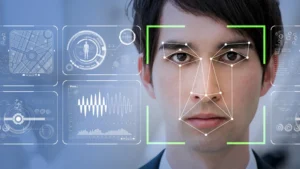


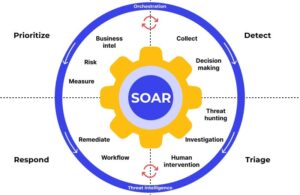
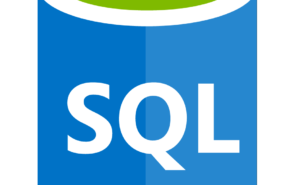

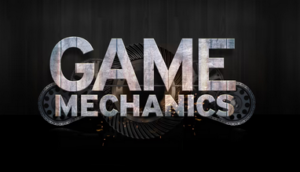

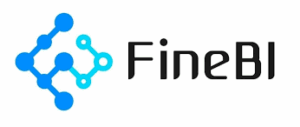

Post Comment